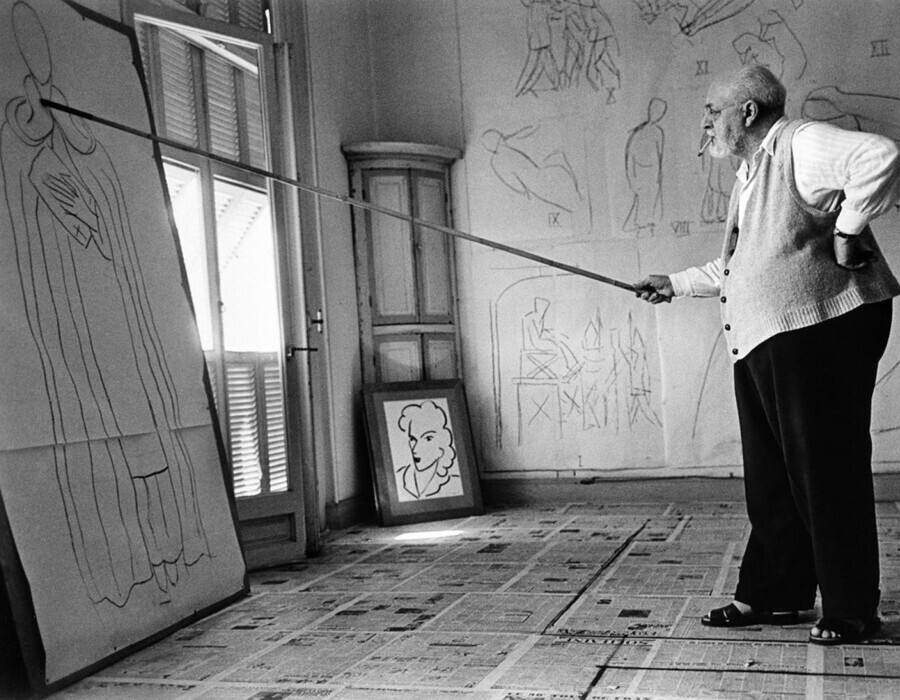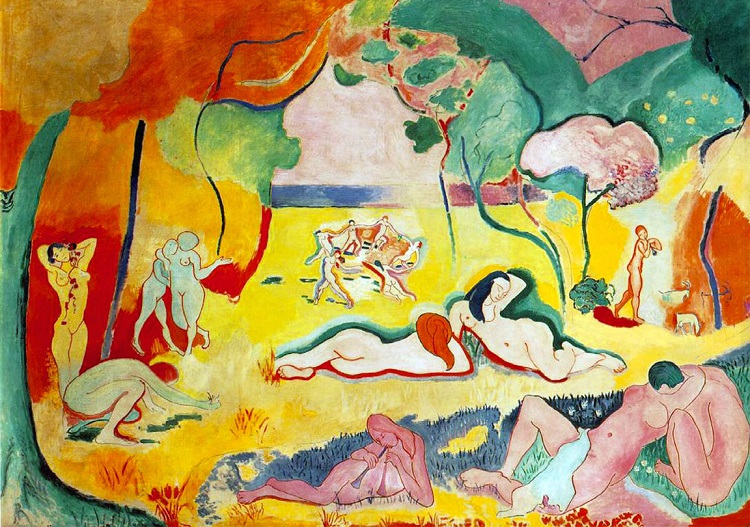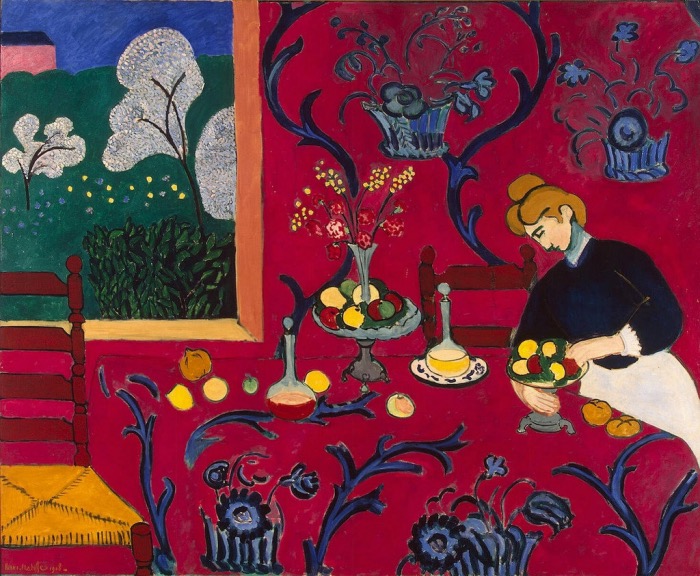
Have you ever been fascinated by the works of Henri Matisse, an artist who challenged pre-existing ideals and revolutionised the art world in the 20th century?
In this post, I take you on a journey to discover the life and work of Henri Matisse. You will discover how a painter turned his passion into a bold artistic expression that left an indelible mark.
Life and works of Henri Matisse: the painter who revolutionised modern art

La gioia di vivere di Matisse
Henri Matisse, a name that still resonates today as a symbol of innovation in modern art. Born in Le Cateau-Cambrèsis on 31 December 1869, Matisse came from a family of merchants. His path seemed already mapped out, but fate had a momentous change in store.
At the age of eighteen, Matisse moved to Paris to study law, following his father’s wish. However, destiny took an unexpected turn when an appendicitis attack forced him into a hospital stay that revealed a burning passion for painting. That moment was the enlightenment that drove him to dedicate his life to art, abandoning the world of employed positions to embrace his true self.
EARLY EXPERIENCES AND THE EMBRACE OF THE AVANT-GARDE
Matisse’s early experiences in art took him to the Académie Julian, where he came into contact with personalities such as Gustave Moreau. He was also influenced by Impressionist painters and masters such as Gauguin, Cézanne and Van Gogh.
Matisse immersed himself in an era of fervent creativity, embracing the avant-garde movements of the new century. Prominent among these was the Fauves movement, but also decisive was his fundamental encounter with another great artist, Pablo Picasso.
THE CHALLENGES AND TRANSFORMATIONS OF MATISSE
Around the 1930s a lively period began for Matisse. He
accepted several
commissions to create stage sets and made several trips that took him to Italy and the United States.
Matisse’s life, however, also went through dark times. He separated from his wife and was diagnosed with cancer. Although he overcame this challenge, his last years were marked by the fight against the disease and the need to paint while in a wheelchair. However, this period marked a creative turning point, as Matisse decided to explore new forms of expression such as collages and writing texts, including the famous ‘Jazz’ (1947), as well as illustrating novels.
MATISSE’S INNOVATIVE TECNIQUE AND ICONIC WORKS
Matisse’s artistic technique made him a pioneer in art, simplifying the surrounding reality into essential geometric shapes.
Matisse used colour as his primary means of expression. His subjects, absorbed and idealised, came to life on canvas through a symphony of vivid primary and secondary colours, distancing himself from the objective representation of the outside world.
Matisse was a key member of the Fauves movement, which swept away traditional perspective and chiaroscuro, embracing colour as its primary language. This artistic movement left an indelible imprint on his work and on 20th century art.
Among Matisse’s most iconic works is ‘Madame Matisse’ (1905), which portrays his wife Amélie Noelie Parayre in bold, vibrant colours, highlighting the influence of Gauguin and the Japanese arts. ‘Woman with a Hat’ (1905) was Matisse’s visiting card at the first Fauves exhibition, causing a scandal due to its chromatic violence. ‘The Joy of Living’ (1906) complemented the Fauvist movement with a distinctive outline, reflecting Matisse’s diverse influences and promoting a positive and stimulating outlook for the new century.
Undoubtedly, Matisse’s most famous work is ‘The Dance’ (1909-1910), a lively and dynamic depiction that embodies the bold use of colour as an artistic language. In the painting ‘The Red Studio’ (1911), Matisse embraced abstractionism, challenging three-dimensional perspective and opening the door to new forms of artistic expression.

La stanza rossa di Matisse
Henri Matisse, with his bold vision and mastery of colour, redefined modern art, leaving an artistic legacy that continues to inspire and fascinate. His works remain a seminal chapter in art history, celebrating the pursuit of innovation and boundless beauty.
Matisse embodied the idea that art should not be limited by rules or conventions, but should be an authentic and personal expression of oneself. He demonstrated that the artist has the power to challenge expectations, to break patterns and to create something new and surprising. His constant search for new ways to represent reality has inspired successive generations of artists to fearlessly explore their creative potential.

